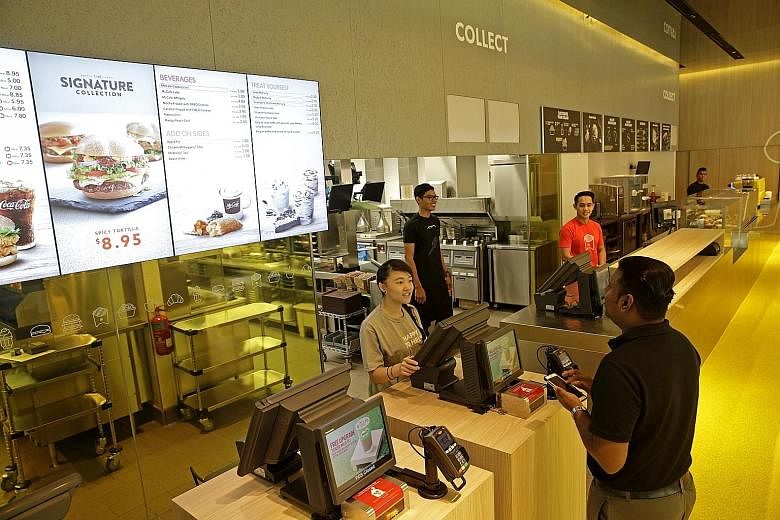The food and beverage industry is in a pickle with the slowing economy, but the fast-food industry appears to be staying ahead.
The latest official figures show that sales at fast-food outlets were better than those at restaurants this year until September, except for June.
Fast-food sales in September are estimated to have risen 2.6 per cent over the same period last year.
But sales at restaurants rose more modestly at 0.9 per cent.
Still, sales in both the restaurant and fast-food categories have slowed down compared with five years ago. The fast-food industry grew just 1 per cent last year, a significant drop from the 10 per cent growth in 2011.
High rental rates and a manpower crunch have contributed to the sector's misery, as has a slowing economy.
The fast-food industry is doing better because of lower prices and promotions. The industry is also a lot more nimble in responding to food trends, said observers.
"It has speed and convenience, and even the ambience is getting better at the outlets. They keep having new products, which people get on to social media and talk about," said Singapore Polytechnic senior retail lecturer Sarah Lim.
Fast food is also more attractive when times are bad, said Associate Professor Prem Shamdasani, from the National University of Singapore Business School.
Texas Chicken, which opened two new outlets in Singapore in the second half of this year, said it has seen a 6 per cent growth in same- store sales in the first nine months this year, compared with the same period last year.
Popeyes, also a fried-chicken chain, reported the same amount of growth in sales.
Besides the introduction of new products, the chains said sales are up because of higher productivity, which leads to lower costs, and more efficiency.
International chains like McDonald's and Popeyes as well as local chain BurgerUp have invested in technology such as self-ordering food kiosks that help streamline services and reduce the dependence on staff.
"We offer burger customisation, so it is essential to have the ordering kiosk for diners to do it without hogging the order counter," said Mr Charlie Tan, BurgerUp's director of strategic planning and marketing.
He said this has led to 20 per cent savings in manpower.
Burger King is expected to adopt a similar system next year, said a spokesman. Texas Chicken is exploring the option.
The use of such technology has translated into better sales.
Mr Dickson Low, chief operating officer of Revenue Valley Group, which runs the Popeyes chain in Singapore, said staff have noticed more customers ordering side dishes and getting bigger portions of food.
He said this may be because the self-ordering kiosks allow them to view the images of all items on the menu. "For restaurants that use self-ordering kiosks, the orders for add-on and top-up items are higher by 15 per cent (than at restaurants) without kiosks."
The firm has invested $150,000 to $200,000 on these kiosks for each of its five outlets.
Prof Shamdasani said fast-food outlets find it more cost-efficient to invest because of the number of outlets they operate.
On the other hand, restaurants outside the industry may operate fewer branches and struggle to afford the technology.
Besides technology, the fast-food industry has also turned to the local palate to attract customers.
McDonald's, for example, introduced salted egg burgers in June this year.Texas Chicken introduced flavours such as sambal chicken, as well as herb and garlic chicken.
"Singapore is the hotbed of innovation and creativity when it comes to flavour profiles. It is a trend leader," said Mr Amarpal S. Sandhu, Texas Chicken's general manager for the Asia-Pacific region.

